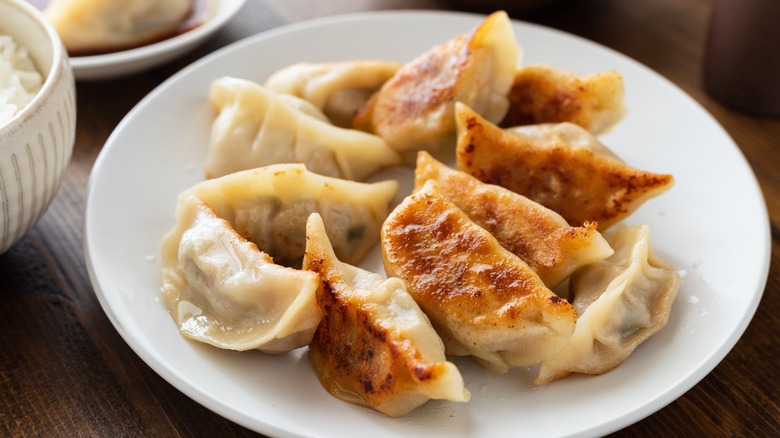Despite the name, we never really want our potstickers to stick to the pan — that would be a dumpling disaster! The delicate pockets of dough should be steamed to perfection after developing a crispy brown bottom in the pan. The contrast of the crunch and taste of the golden bottom dough adds both eye appeal and flavor to a potsticker, and getting just the right outcome depends on timing and using the right pan.
A non-stick pan is essential for cooking potstickders. You want a pan that will fry the bottom of the dumplings without too much oil, but also not risk the dumplings sticking and tearing open when you take them out of the pan. Although a stainless steel or carbon steel pan is good for browning in general, potstickers also steam in the pan, which creates a film of dissolved starch between the bottom and the pan. That small amount of damp starch will stick in the pores of a plain metal pan, making the dumplings a problem to move as they brown.
Crisping up the perfect potsticker

Since the browning of a potsticker is so important for the taste and texture, choosing the right pan is key. A wide non-stick pan with a lid is a great choice, since you’ll be steaming the dumplings as well as browning them. The potstickers should not be crowded into the pan, or they will cook unevenly. If they are packed too close together, the filling might not get cooked fully, and potstickers at the edges of the pan will be overcooked by the time the middle ones are finished. Most recipes call for adding a small amount of oil to the pan and adding the potstickers flat-side down for the initial browning. Once crisp, water is added and the pan of dumplings is covered to create steam for the final cooking.
If you are not a fan of traditional non-stick pans, don’t forget that a seasoned cast iron pan is naturally non-stick. If you keep your cast iron pan in good shape, you’ll have a wonderful alternative for making the perfect pan of potstickers.







